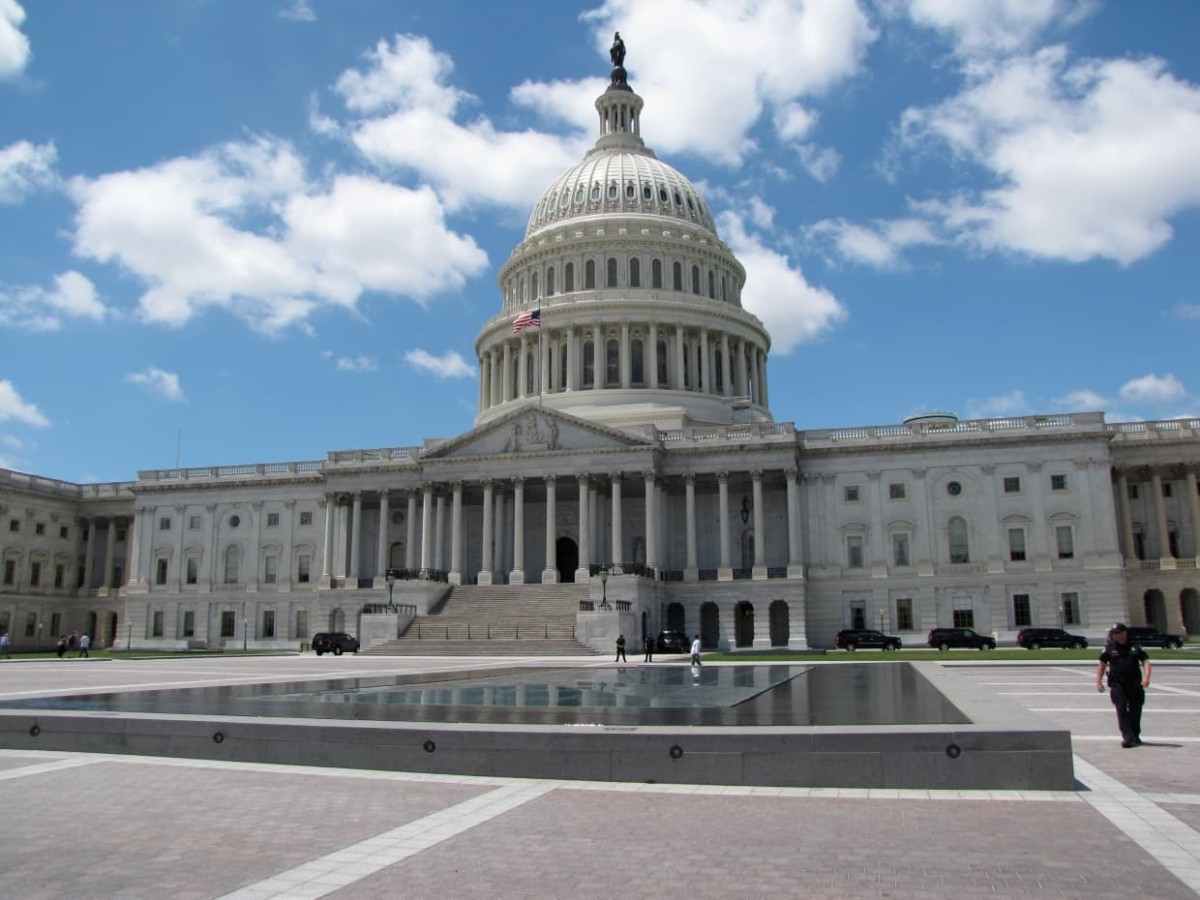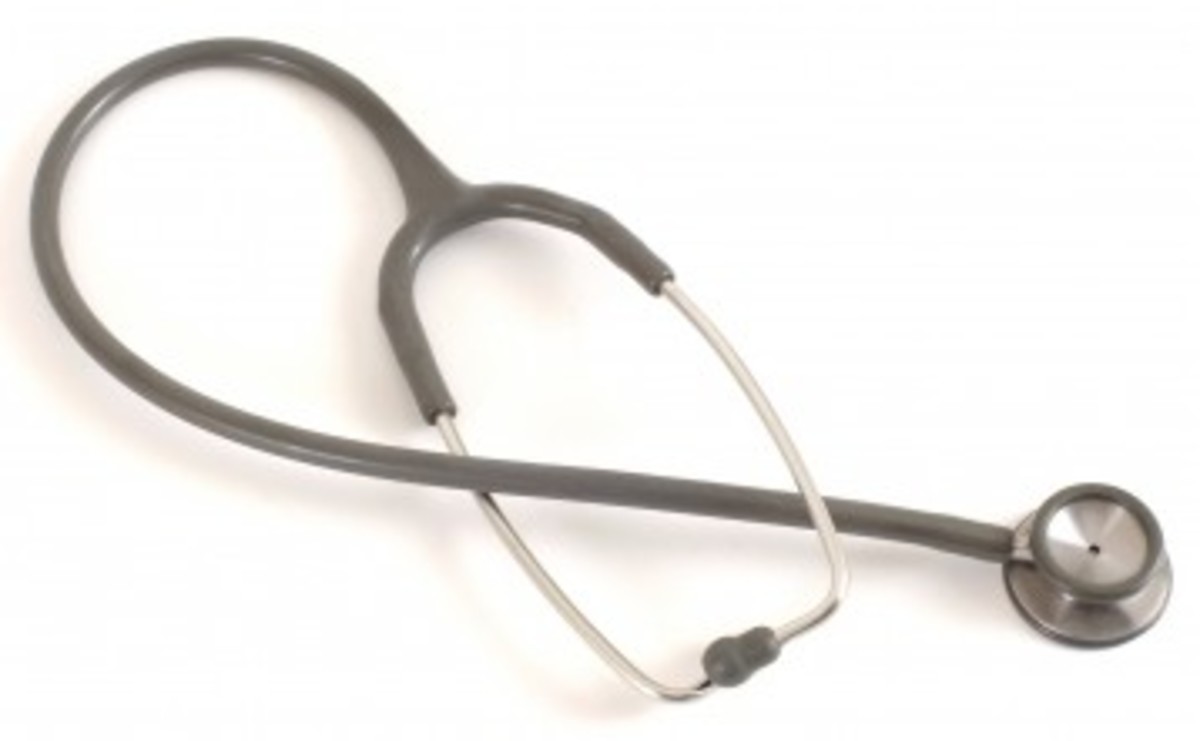Documented: $105 Billion Hidden Appropriations in Health Care Law
In a shocking new report by C. Stephen Redhead from the Congressional Research Service it has been revealed that within the Health Care Reform legislation recently passed by Congress there exists over $105 Billion in appropriations to fund the legislation.
So while the electorate in November sent a strong message that they wanted the health care bill overturned or defunded, the defunding option was NEVER an option. The bill must be overturned.
I would go so far as to say that the perpetrators of this deception must be investigated and punished if at all possible under the law.
Please notice all the NEW AUTHORITY the government has grabbed for itself over our lives with this bill. Children in public schools will have a health care authority to watch over them.
$375 Million tax dollars will pay for "Personal Responsibility Training" in birth control.
$1.5 Billion will fund maternal, infant, and early childhood home visitation programs.
The report follows with interesting information highlighted by me.
I inserted several rows of asterisks to mark the area of the document where the actual appropriations begin in case you want to skip past the first part.
Appropriations and Fund Transfers in the
Patient Protection and Affordable Care Act
(PPACA)
C. Stephen Redhead
Specialist in Health Policy
October 14, 2010
Summary
On March 23, 2010, President Obama signed into law a comprehensive health care reform bill,
the Patient Protection and Affordable Care Act (PPACA; P.L. 111-148). The following week, on
March 30, 2010, the President signed the Health Care and Education Reconciliation Act of 2010
(HCERA; P.L. 111-152), which amended various health care and revenue provisions in PPACA.
Among its many provisions, PPACA (as amended by HCERA) restructures the private health
insurance market, sets minimum standards for health coverage, creates a mandate for most U.S. residents to obtain health insurance, and provides for the establishment by 2014 of insurance exchanges through which certain individuals and families will be able to receive federal subsidies to reduce the cost of purchasing that coverage. The new law expands eligibility for Medicaid; amends the Medicare program in ways that are intended to reduce the growth in Medicare spending that had been projected under preexisting law; imposes an excise tax on insurance plans found to have high premiums; and makes other changes to the tax code, Medicare, Medicaid, and numerous other federal programs.
In some instances, PPACA mandates appropriations or requires the Secretary to transfer from the Medicare Part A and Part B trust funds billions of dollars to support new or existing grant programs and other activities. This report summarizes those mandated appropriations and fund transfers. They include funding for a temporary insurance program for individuals who have been uninsured for several months and have a preexisting condition, as well as funding for states to plan and establish exchanges. PPACA also provides funding for various Medicare and Medicaid demonstration programs, for the creation of a Center for Medicare and Medicaid Innovation to test and implement innovative payment and service delivery models, and for an independent board to provide Congress with proposals for reducing Medicare cost growth and improving quality of care for Medicare beneficiaries.
Among other provisions, the new health reform law appropriates funding for health workforce
and maternal and child health programs, and establishes three multi-billion dollar funds. The first
fund will provide a total of $11 billion over five years in supplementary funding for community health centers and the National Health Service Corps. (A separate appropriation provides $1.5 billion for health center construction and renovation.)
The second fund will support comparative effectiveness research through FY2019 with a mixture of appropriations and fund transfers. The third fund, which is funded in perpetuity, is to support prevention, wellness, and other public health-related programs and activities authorized under the Public Health Service Act (PHSA). In addition to the mandated appropriations and fund transfers discussed in this report, PPACA authorizes new funding for numerous existing discretionary grant and other programs and activities, primarily ones authorized under the PHSA. It also creates a number of new discretionary grant programs and activities and provides for each an authorization of appropriations. Funding for all of these discretionary programs and activities is subject to action by congressional appropriators. A companion product, CRS Report R41390, Discretionary Funding in the Patient Protection and Affordable Care Act (PPACA), summarizes all the provisions in PPACA for which appropriations are authorized.
Contents
Introduction................................................................................................................................1
Mandated Appropriations and Fund Transfers........................................................................1
Discretionary Funding...........................................................................................................2
CRS Products........................................................................................................................2
Tables
Table 1. Appropriations and Fund Transfers in the Health Reform Law........................................3
Contacts
Author Contact Information......................................................................................................11
Acknowledgments....................................................................................................................11
Introduction
On March 23, 2010, President Obama signed into law a comprehensive health care reform bill,
the Patient Protection and Affordable Care Act (PPACA; P.L. 111-148).1 The following week, on
March 30, 2010, the President signed the Health Care and Education Reconciliation Act of 2010
(HCERA; P.L. 111-152), which amended various health care and revenue provisions in PPACA.2
Among its many provisions, PPACA (as amended by HCERA) restructures the private health
insurance market, sets minimum standards for health coverage, creates a mandate for most U.S. residents to obtain health insurance, and provides for the establishment by 2014 of insurance exchanges through which certain individuals and families will be able to receive federal subsidies to reduce the cost of purchasing that coverage. The new law expands eligibility for Medicaid; amends the Medicare program in ways that are intended to reduce the growth in Medicare spending that had been projected under preexisting law; imposes an excise tax on insurance plans found to have high premiums; and makes other changes to the tax code, Medicare, Medicaid, and numerous other federal programs.
Mandated Appropriations and Fund TransfersIn some instances, PPACA (as amended by HCERA) mandates appropriations or requires the Secretary to transfer from the Medicare Part A and Part B trust funds billions of dollars to support new or existing grant programs and other activities.
Table 1 summarizes all such appropriations and fund transfers, which are grouped under the following headings:
(1) Private Health Insurance Reforms;
(2) Medicaid and the Children’s Health Insurance Program (CHIP);
(3) Medicare;
(4) Fraud and Abuse;
(5) Health Centers and the National Health Service Corps (NHSC);
(6) Health Workforce;
(7) Community-Based Prevention and Wellness;
(8) Maternal and Child Health;
(9) Long-Term Care;
(10) Comparative Effectiveness Research;
(11) Biomedical Research; and
(12) PPACA Implementation.
Each table entry includes the following information:(1) the PPACA section number;
(2) an indication of whether the provision modifies the Public Health Service Act or another law either by amending an existing section or by adding a new one, or whether the provision creates new stand-alone statutory authority;
(3) a brief description of the program or activity; and
(4) details of the appropriation or transfer of funds. In most cases, the language specifies funding levels (or transfer amounts) for one or more fiscal years. Two provisions appropriate “such sums as may be necessary” (SSAN) to carry out a program. Unless otherwise stated, references in the table to the Secretary refer to the Secretary of Health and Human Services (HHS).
The following laws are referred to in the table by their acronym:
• Public Health Service Act (PHSA)
• Social Security Act (SSA)
1
The full text of the Patient Protection and Affordable Care Act, as enacted, is at http://www.kaiserhealthnews.org/Final-Health-Reform-Bill-Patient-Protection-and-Affordable-Care-Act.aspx
THE ORIGINAL WEB ADDRESS BELOW HAS BEEN DISABLED THE KAISER ADDRESS ABOVE IS STILL AVAILABLE.
http:..frwebgate.access.gpo.gov/cgi-bin/getdoc.cgi?dbname=111_cong_bills&docid=f:h4872enr.txt.pdf
2
The full text of the Health Care and Education Reconciliation Act of 2010, as enacted, is at
[url]http://thomas.loc.gov/cgi-bin/query/z?c111:H.R.4872:
• Internal Revenue Code (IRC)
• Older Americans Act (OAA)
• Deficit Reduction Act of 2005 (DRA)3
• Medicare Improvements for Patients and Providers Act of 2008 (MIPPA)4Discretionary Funding
In addition to the mandated appropriations and fund transfers discussed in this report, PPACA (as amended by HCERA) authorizes new funding for numerous existing discretionary grant and other programs and activities. It also creates a number of new discretionary grant programs and
activities and provides for each an authorization of appropriations. Funding for all of these
discretionary programs and activities is subject to action by congressional appropriators. A
companion product, CRS Report R41390, Discretionary Funding in the Patient Protection and
Affordable Care Act (PPACA), summarizes all the provisions in PPACA for which appropriations
are authorized.
CRS Products
More information on the PPACA provisions summarized in Table 1 may be found in the
following CRS products:
• CRS Report R40942, Private Health Insurance Provisions in the Patient
Protection and Affordable Care Act (PPACA), by Hinda Chaikind, Bernadette
Fernandez, and Mark Newsom
• CRS Report R41210, Medicaid and the State Children’s Health Insurance
Program (CHIP) Provisions in PPACA: Summary and Timeline, coordinated by
Julie Stone
• CRS Report R41196, Medicare Provisions in the Patient Protection and
Affordable Care Act (PPACA): Summary and Timeline, coordinated by Patricia A.
Davis
• CRS Report R41278, Public Health, Workforce, Quality, and Related Provisions
in PPACA: Summary and Timeline, coordinated by C. Stephen Redhead and Erin
D. Williams
**********************************
************************************
**********************************************
*****************************************************************************
***********************************************************************
***********************************************************
*************************************
*********************
Table 1. Appropriations and Fund Transfers in the Health Reform Law
Patient Protection and Affordable Care Act (PPACA; P.L. 111-148, as amended by P.L. 111-152)
1002 [New] PHSA Sec. 2793
Health insurance consumer information. Requires the Secretary to award grants to states to enable them (or the exchanges operating in such states) to establish, expand, or provide support for offices of health insurance consumer assistance, or health insurance ombudsman programs. These independent entities will assist consumers with filing complaints and appeals, educate consumers on their rights and responsibilities, and collect, track, and quantify consumer problems and inquiries.
Appropriates $30 million for the first fiscal year of the program, to remain available without fiscal year limitation. [Note: the section also authorizes to be appropriated SSAN for each fiscal year thereafter.]
1003 [New] PHSA Sec. 2794
Review of health insurance premium rates. Requires the Secretary, in conjunction with the states, to establish a process for the annual review of unreasonable increases in health insurance premiums beginning in the 2010 plan year. Health insurance issuers must submit a justification for a premium increase judged to be unreasonable prior to its implementation. Instructs the Secretary to award grants to states during the five-year period FY2010 through FY2014 for carrying out the premium review. State grantees are required to provide the Secretary with information about trends in premium increases, including recommendations as to whether particular issuers should be excluded from participation in the exchange due to a pattern of excessive or unjustified premium increases.Appropriates $250 million for the grant program. Funds remaining unobligated at the end of FY2014 shall remain available for grants to states for planning and implementing PPACA’s individual and group market reforms.
1101 [New authority] High-risk pools for individuals with preexisting conditions. Requires the Secretary, within 90 days of enactment, to establish a temporary high-risk pool program to provide health insurance coverage for eligible individuals who have been uninsured for six months and have a preexisting condition. The program, which terminates on January 1, 2014, permits premium rates to vary on the basis of age by a factor of up to 4:1 and places limits on out-of-pocket costs.
Appropriates $5 billion, to remain available without fiscal year limitation, to pay claims
against (and administrative costs of) the high- risk pool that are in excess of premiums
collected from enrollees.
1102 [New authority] Reinsurance for early retirees. Requires the Secretary, within 90 days of enactment, to establish a temporary reinsurance program to provide reimbursement to participating employer-based plans for part of the cost of providing health benefits to early retirees age 55-64 and their families. The program reimburses participating plans for 80% of the costs of benefits provided per enrollee in excess of $15,000 and below $90,000. Funds must be used to lower costs for the plan; for example, the funds could be used to reduce premium costs or lower out-of-pocket costs for beneficiaries.Appropriates $5 billion, to remain available without fiscal year limitation, to carry out thereinsurance program.
1311[New authority] Health insurance exchanges. Requires the Secretary, within one year of enactment, to award grants to states to plan and establish exchanges. By January 1, 2014, each state must have an exchange to facilitate access to insurers’ qualified health plans. The grants can be renewed to states making progress in establishing an exchange, implementing PPACA’s private health insurance market reforms, and meeting other benchmarks. However, no grant may be awarded after January 1, 2015. Exchanges will have to be self-sustaining by then, using assessments on insurers or some other way to generate funds to support their operations.
Appropriates amounts necessary for the Secretary to award state grants. For each fiscal
year, the Secretary must determine the total amount that will be made available to each state.1322 [New authority] Health insurance cooperatives. Requires the Secretary to establish the Consumer Operated and Oriented Plan (CO-OP) program to provide funding until July 1, 2013, for the creation of nonprofit member-run health insurance issuers that offer qualified health plans in the individual and small group markets. Funds are to be provided as loans for start-up costs and as grants for meeting solvency requirements. Loans must be repaid within 5 years; grants must be repaid within 15 years. Prohibits health insurance issuers that existed on July 16, 2009, or governmental organizations from participating in the CO-OP program.
Appropriates $6 billion to carry out the CO- OP program.1323[ New authority] Funding for territories. Provides funds for U.S. territories that elect to establish a health insurance exchange. Funds must be used to provide premium and cost-sharing assistance to territory residents who obtain health insurance coverage through the exchange.
Appropriates $1 billion, to be available during the period 2014 through 2019. Of that total
amount, $925 million is for Puerto Rico, and the remaining $75 million is for the other U.S.
territories in amounts as specified by the Secretary. Medicaid and Children’s Health Insurance Program (CHIP)2701 [New] SSA Sec. 1139B
Medicaid adult health quality measures. Requires the Secretary to develop and, not later than January 1, 2012, publish an initial core set of quality measures for Medicaid-eligible adults. Not later than January 1, 2013, requires the Secretary to develop a standardized format for states to report information about the quality of Medicaid care for adults based on those measures. The Secretary and the states must report on the development of and improvements to the quality measurement program on a regular basis.Appropriates $60 million for each of FY2010 through FY2014. (Total amount = $300
million.)
2707 [New authority] Medicaid emergency psychiatric demonstration program. Directs the Secretary to establish a three-year Medicaid demonstration in which eligible states are required to reimburse certain institutions for mental disease (IMDs) for services provided to Medicaid beneficiaries aged 21 through 64 who are in need of medical assistance to stabilize an emergency psychiatric condition.Appropriates $75 million for FY2011, to remain available for obligation through December 31, 2015.
2801 Amends SSA Sec. 1900
Medicaid and CHIP Payment and Access Commission (MACPAC). Clarifies and expands MACPAC’s duties; for example, to include a review and assessment of payment policies under Medicaid and CHIP and how factors affecting expenditures and payment methodologies enable beneficiaries to obtain services, affect provider supply, and affect providers that serve a disproportionate share of low-income and other vulnerable populations. Additional duties include reviewing and assessing policies related to eligibility, enrollment and retention, benefits and coverage, quality of care, and interactions between Medicaid and Medicare and how those interactions affect access to services, payments, and dual eligibles. MACPAC is also required to report to Congress on any Medicaid and CHIP regulations that affect access, quality, and efficiency of health care.
Appropriates $9 million, and transfers from CHIP funding an additional $2 million for FY2010 for MACPAC activities. Funds are to remain available until expended. (Total amount = $11 million.) 4108 New authority Medicaid prevention and wellness incentives. Requires the Secretary to award state grants to provide incentives for Medicaid beneficiaries to participate in evidence-based healthy lifestyle programs to prevent or help manage chronic disease.
Appropriates $100 million for the five-year period beginning January 1, 2011, to remain available until expended.4306 Amends SSA Sec. 1139A(e)
CHIP childhood obesity demonstration program. Appropriates funding for a program authorized by the Children’s Health Insurance Program Reauthorization Act (CHIPRA; P.L. 111-3), which requires the Secretary to conduct a demonstration project to develop a model for reducing childhood obesity.
Appropriates $25 million for the period FY2010 through FY2014.10203 Amends SSA Secs. 2104 & 2113
CHIP annual appropriations, and outreach and enrollment grants. Appropriates funding for the CHIP program for FY2014 and FY2015 (the program previously had been funded through
FY2013).Also, extends the time period for CHIP outreach and enrollment grants through FY2015 and increases the existing appropriation for such grants from $100 million to $140 million.
Appropriates $19.147 billion for FY2014, and a total of $21.061 billion for FY2015 for the
CHIP program. Appropriates an additional $40 million for the CHIP outreach and enrollment grants.
Medicare
3014 Amends SSA Sec. 1890(b). New SSA Sec. 1890A
Medicare quality measures. Expands the duties of the consensus-based entity under contract with CMS pursuant to SSA Sec. 1890 (currently the National Quality Forum). Requires the entity to convene multi-stakeholder groups to provide input on the national priorities for health care quality improvement (developed under PPACA). In addition, the multi-stakeholder groups are required to provide input on the selection of quality measures for use in various specified Medicare payment systems for hospitals and other providers, as well as in other health care programs, and for use in reporting performance information to the public. Establishes a multi-step pre-rulemaking process and timeline for the adoption, dissemination, and review of measures by the Secretary.
Requires the Secretary to transfer from the Medicare Part A and Part B trust funds $20
million for each of FY2010 through FY2014, to remain available until expended.a (Total amount = $100 million.)
3021 [New] SSA Sec. 1115A
Center for Medicare and Medicaid Innovation (CMI). Requires the Secretary, no later than January 1, 2011, to establish the CMI within the Centers for Medicare and Medicaid Services (CMS). The purpose of CMI is to test and evaluate innovative payment and service delivery models to reduce program expenditures under Medicare, Medicaid, and CHIP while preserving or enhancing the quality of care furnished under these programs. In selecting the models, the Secretary is also required to give preference to those that improve the coordination, quality, and efficiency of health care services.
Appropriates (1) $5 million for FY2010 for the selection, testing, and evaluation of new
payment and service delivery models; and (2) $10 billion for the period FY2011 through
FY2019, plus $10 billion for each subsequent 10-fiscal year period, to continue such activities and for the expansion and nationwide implementation of successful models.b
Amounts are to remain available until expended.
3024 [New] SSA Sec. 1866D
Medicare independence at home demonstration program. Requires the Secretary to conduct a three-year Medicare demonstration program, beginning no later than January 1, 2012, to test a payment incentive and service delivery model aimed at reducing expenditures and improving health outcomes that uses physician- and nurse practitioner-directed primary care teams to provide home-based services to chronically ill patients. The Secretary must submit a plan, no later than January 1, 2016, for expanding the program if it is determined that such expansion would improve the quality of care and reduce spending.
Requires the Secretary to transfer from the Medicare Part A and Part B trust funds $5
million for each of FY2010 through FY2015 for administering and carrying out the
demonstration, to remain available until expended.a (Total amount = $30 million.)
3026 [New authority] Community-based care transitions program. Requires the Secretary to establish a five-year program, beginning January 1, 2011, to provide funding to eligible hospitals and community-based organizations that provide evidence-based transition services to Medicare beneficiaries with multiple chronic conditions who are high risk for hospital readmission.
Requires the Secretary to transfer from the Medicare Part A and Part B trust funds $500
million for the period FY2011 through FY2015, to remain available until expended.
3027 Amends DRA Sec. 5007
Medicare gainsharing demonstration program. Under DRA Sec. 5007, CMS is supporting two gainsharing projects to test and evaluate arrangements between hospitals and physicians that are intended to improve the quality and efficiency of care provided to beneficiaries. The demonstration allows hospitals to provide gainsharing payments to physicians that represent a share of the savings incurred as a result of collaborative efforts to improve overall quality and efficiency.
Appropriates $1.6 million for FY2010, to remain available through FY2014 or until
expended, for carrying out the demonstration.
3306 Amends MIPPA Sec. 119
Outreach and assistance for Medicare low-income programs. Provides additional funding for beneficiary outreach and education activities for Medicare low-income programs through the following entities: (1) State Health Insurance Counseling and Assistance Programs (SHIPs); (2) Area Agencies on Aging (AAAs); (3) Aging and Disability Resource Centers (ADRCs); and (4) the National Center for Benefits and Outreach Enrollment (NCBOE).
Appropriates a total of $45 million for the period FY2010 through FY2012, to remain available until expended, as follows: (1) $15 million for SHIPs; (2) $15 million for AAAs; (3) $10 million for ADRCs; and (4) $5 million for the NCBOE.
3403 [New] SSA Sec. 1899A
Independent Payment Advisory Board. Creates an independent, 15-member Payment Advisory Board tasked with presenting Congress with comprehensive proposals to reduce excess cost growth and improve quality of care for Medicare beneficiaries. In years when Medicare costs are projected to exceed a target growth rate, the board’s proposals will take effect unless Congress passes an alternative measure that achieves the same level of savings. Congress would be allowed to consider an alternative provision on a fast-track basis. The board would be prohibited from making proposals that ration care, raise taxes, or increase Part B premiums, or change Medicare benefit, eligibility, or cost-sharing standards. Requires the board to make biannual recommendations to the President, Congress, and private entities on actions they can take to improve quality and constrain the rate of cost growth in the private sector. Requires the board to make non-binding Medicare recommendations to Congress in years in which Medicare growth is below the targeted growth rate. Beginning in 2019, limits the board’s binding recommendations to Congress to every other year if the growth in overall health spending exceeds growth in Medicare spending; such recommendations would focus on slowing overall health spending while maintaining or enhancing beneficiary access to quality care under Medicare.
Appropriates $15 million for FY2012 to support the board’s activities. For each subsequent fiscal year, appropriates the amount from the previous fiscal year adjusted for inflation. Sixty percent of the appropriation is to be derived by transfer from the Medicare Part A trust fund, and 40% is to be derived by transfer from the Medicare Part B trust fund.
4202(b) [New authority] Medicare prevention and wellness evaluation. Requires the Secretary to conduct an evaluation of community-based prevention and wellness programs and, based on the findings, develop a plan to promote healthy lifestyles and chronic disease self-management among Medicare beneficiaries.Requires the Secretary to transfer $50 million from the Medicare Part A and Part B trust
funds to fund the evaluation.a 4204(e) New authority Medicare vaccine coverage. Requires the GAO to study and report to Congress on the impact of Medicare Part D vaccine coverage on access to those vaccines among beneficiaries. Appropriates $1 million for FY2010 for the
GAO study.
10323 [New] SSA Secs. 1881A & 2009
Environmental health hazards. Provides Medicare coverage and medical screening services to certain individuals exposed to environmental health hazards. Also, requires the Secretary to award grants to state and local government agencies, health care facilities, and other entities to (1) provide screening for specified lung diseases and other environmental health conditions to at-risk individuals; and (2) disseminate public information about the availability of screening, the detection and treatment of environmental health conditions, and the availability of Medicare benefits to certain individuals diagnosed with such conditions.
Appropriates $23 million for the period FY2010 through FY2014, and $20 million for each five-fiscal year period thereafter, to carry out the screening and public information
dissemination program.
Fraud and Abuse 6402(i) Amends SSA Sec. 1817(k)
Health Care Fraud and Abuse Control (HCFAC) Account. Permanently applies an inflation adjustment to the annual appropriation (provided under SSA Sec. 1817(k)) for the HCFAC Account, which finances investigative and enforcement activities undertaken by the HHS Office of the Inspector General, the Department of Justice, and the Federal Bureau of Investigation, as well as Medicare Integrity Program activities undertaken by CMS contractors. In addition, provides supplemental funds through FY2020 for the HCFAC Account.
Appropriates $10 million for each of FY2011 through FY2020; plus an additional $95 million for FY2011, $55 million for FY2012, $30 million for each of FY2013 and FY2014, and $20 million for each of FY2015 and FY2016. Funds are to remain available until expended. (Total amount = $350 million.)
Health Centers and the National Health Service Corps(NHSC) 4101(a) [New authority] School-based health centers. Requires the Secretary to create a grant program for the establishment of school-based health centers. Funds may be used for facility construction, expansion, and equipment.
Appropriates $50 million for each of FY2010 through FY2013, to remain available until expended. (Total amount = $200 million.)
0503(b) [New authority] Community Health Center Fund (CHCF). Establishes a CHCF and appropriates a total of $11 billion over the five-year period FY2011 through FY2015 to the fund, to be transferred by the Secretary to HHS accounts to increase funding, over the FY2008 level, for (1) community health center operations; and (2) NHSC operations, scholarships, and loan repayments. Transfers from the CHCF to the Secretary the following amounts, to remain available until expended.
(1) For health center operations:
FY2011 = $1 billion;
FY2012 = $1.2 billion;
FY2013 = $1.5 billion;FY2014 = $2.2 billion;
and FY2015 = $3.6 billion.(Total amount =$9.5 billion.)
(2) For NHSC:
FY2011 = $290 million;
FY2012 = $295 million;
FY2013 = $300 million;
FY2014 = $305 million; and
FY2015 = $310 million. (Total amount = $1.5 billion.)
10503(c) [New authority] Health center construction and renovation. Provides funding for health center construction and renovation.
Appropriates $1.5 billion, to be available for the period FY2011 through FY2015, and to
remain available until expended.
5507(a) [New] SSA Sec. 2008
Health workforce demonstration programs. Requires the Secretary to establish two
demonstration projects. The first is to award grants to states, Indian tribes, institutions of higher education, and local workforce investment boards to provide low-income individuals with the opportunity to obtain education and training in health care jobs that pay well and are in high demand; funds may be used to provide financial aid and other supportive services. The second is to provide states with grants to develop core training competencies and certification programs for personal and home care aides.
Appropriates $85 million for each of FY2010 through FY2014, of which $5 million in each of FY2010 through FY2012 is to be used for the second project. (Total amount = $425 million.)
5507(b) Amends SSA Sec. 501(c)
Family-to-family health information centers. Provides funding for the family-to-family
information centers, which assist families of children with disabilities or special health care needs and the professionals who serve them.
Appropriates $5 million for each of FY2010 through FY2012. (Total amount = $15 million.)5508(c) [New] PHSA Sec. 340H
Teaching health centers. Requires the Secretary to make payments for direct and indirect graduate medical education costs to qualified teaching health centers for the expansion of existing, or establishment of new approved medical residency training programs.
Appropriates SSAN, not to exceed $230 million, for the period FY2011 through FY2015.
5509 [New authority] Medicare graduate nurse education demonstration program. Requires the Secretary to establish a Medicare demonstration program under which up to five eligible hospitals will receive reimbursement for providing advanced practice nurses with clinical training in primary care, preventive care, transitional care, and chronic care management.
Appropriates $50 million for each of FY2012 through FY2015, to remain available until
expended. (Total amount = $200 million.)
10502 [New authority]Health care facility construction. Provides funding for debt service on, or construction or renovation of, a hospital affiliated with a state’s sole public medical and dental school.
Appropriates $100 million for FY2010, to remain available for obligation until September
30, 2011.
Community-Based Prevention and Wellness
4002 [New authority]Prevention and Public Health Fund (PPHF). Establishes a PPHF and appropriates amounts to the fund in perpetuity. Requires the Secretary to transfer amounts from the fund to HHS accounts to increase funding, over the FY2008 level, for PHSA-authorized prevention, wellness, and public health activities, including prevention research and health screenings. Authorizes House and Senate appropriators to transfer monies from the PPHF to eligible activities.
Appropriates the following amounts to the PPHF:FY2010 = $500 million;
FY2011 = $750
million;FY2012 = $1 billion;
FY2013 = $1.25 billion;
FY2014 = $1.5 billion;
FY2015 and each fiscal year thereafter = $2 billion.
Maternal and Child Health
2951 [New] SSA Sec. 511
Maternal, infant, and early childhood home visitation programs. Requires the Secretary to award grants to states, U.S. territories, and Indian tribes to develop and implement early childhood home visiting programs that adhere to evidence-based models of service delivery. Programs must establish benchmarks to measure improvements for the participating families in prenatal, maternal, and newborn health; child health and development; parenting skills; school readiness; juvenile delinquency; and family economic self-sufficiency.
Appropriates the following amounts for the home visitation program:FY2010 = $100 million;
FY2011 = $250 million,
FY2012 = $350 million;
FY2013 = $400 million;
FY2015 = $400 million. (Total amount = $1.5 billion.)
2953 [New] SSA Sec. 513
Personal responsibility education. Establishes a state formula grant program to support evidence-based Personal Responsibility Education programs designed to educate adolescents about abstinence, contraception, and adult preparation, including healthy life skills, educational and career success, and financial literacy. Also, requires the Secretary to award grants to implement innovative youth pregnancy prevention strategies and to target services at high-risk populations.
Appropriates $75 million for each of FY2010 through FY2014, of which $10 million each year is to be reserved for the youth pregnancy prevention grants. (Total amount = $375 million.)
2954 Amends SSA Sec. 510
Abstinence education grants. Renews funding for the state formula grant program, authorized under SSA Sec. 510, to support abstinence education programs. Funds are awarded to states based on the proportion of low-income children in each state compared to the national total, and may only be used for teaching abstinence.
Appropriates $50 million for each of FY2010 through FY2014. (Total amount = $250
million.)
10211-10214 [New authority] Pregnancy assistance grants. In collaboration with the Secretary of Education, requires the Secretary to establish a Pregnancy Assistance Fund for the purpose of awarding grants to states to assist pregnant and parenting teens and women. State grantees have the flexibility to make funds
available to institutions of higher education, high schools and community service centers, and to the state attorneys general to improve services for pregnant women who are victims of domestic violence, sexual assault, or stalking.
Appropriates $25 million for each of FY2010 through FY2019. (Total amount = $250
million.)
Long-Term Care
2405 [New authority] State Aging and Disability Resource Centers (ADRCs). Provides funding for ADRCs (authorized under Sec. 202 of the OAA), which serve as a single, coordinated resource for consumer information on the range of long-term care options in community and institutional settings. Some ADRCs also serve as the entry point to publicly administered long-term care programs (e.g., Medicaid, OAA services, state assistance programs). As of 2009, ADRC funding had expanded to include at least one site in each state, DC, and 3 U.S. territories (Guam, Puerto Rico, and Northern Mariana), with more than 200 sites nationwide.
Appropriates $10 million for each of FY2010 through FY2014. (Total amount = $50 million.)
6201 [New authority] Background checks of long-term care providers. Requires the Secretary to establish a nationwide program for background checks on direct patient access employees of long-term care facilities or providers, and to provide federal matching funds to states to conduct these activities.
Requires the Treasury Secretary to transfer to HHS an amount, not to exceed $160 million, that is specified by the HHS Secretary as necessary to carry out the program for the period FY2010 through FY2012. Funds are to remain available until expended.
Author Contact Information
C. Stephen Redhead
Specialist in Health Policy
credhead@crs.loc.gov, 7-2261
Acknowledgments
Kirsten Colello, Patricia Davis, Gary Guenther, Elayne Heisler, Lisa Herz, Sarah Lister, Chris Peterson,
Amanda Sarata, Pam Smith, Julie Stone, and Susan Thaul provided comments on this report.
Human Events: Now's the Time to Defund Obamacare
- Now\'s the Time to Defund ObamaCare - HUMAN EVENTS
House Republicans must act this week to put the unpopular health care law on the chopping blockand live up to their promise to the American people.








